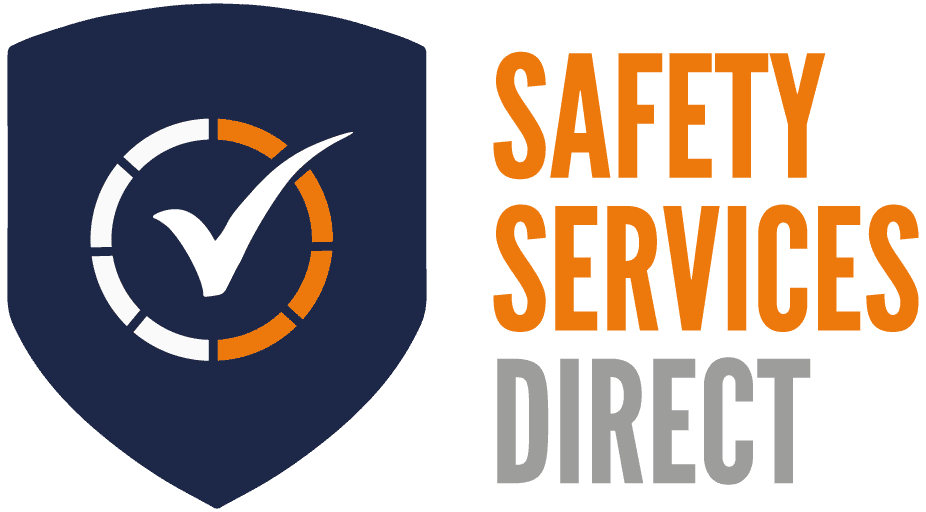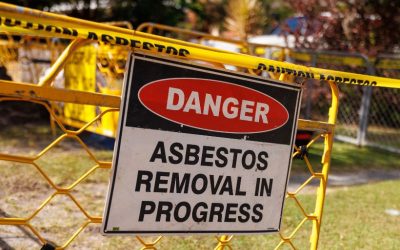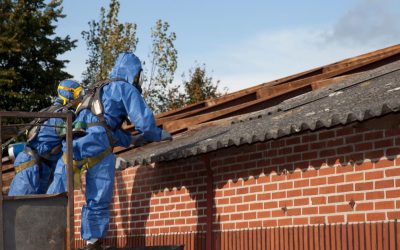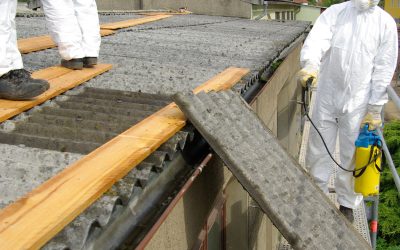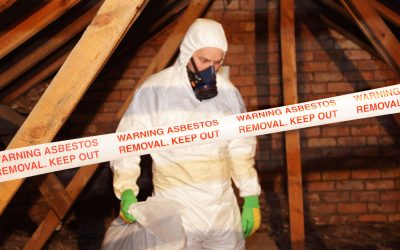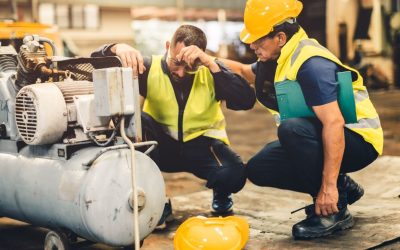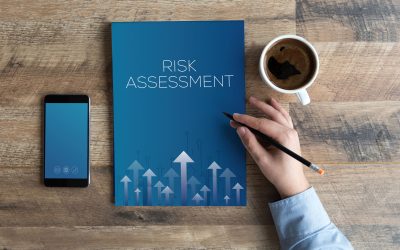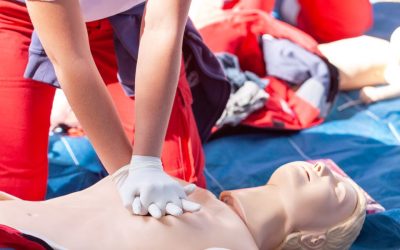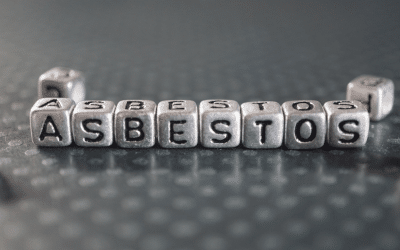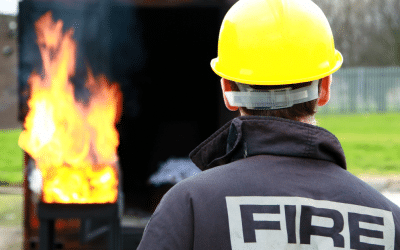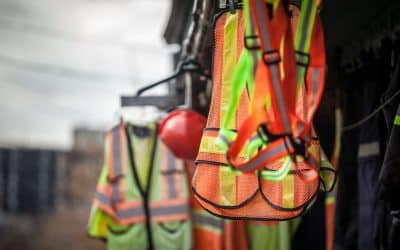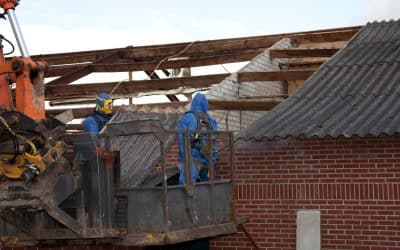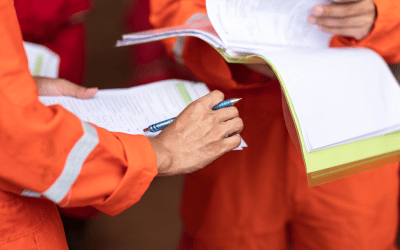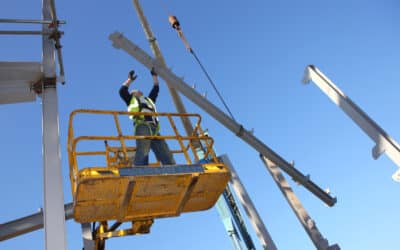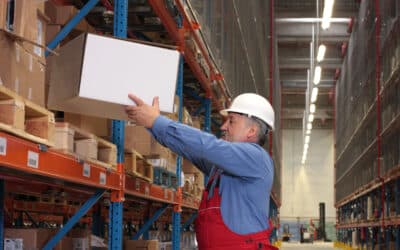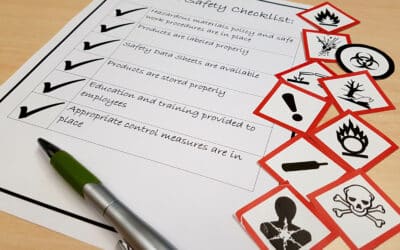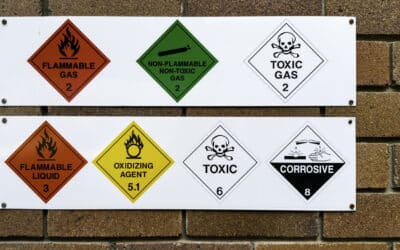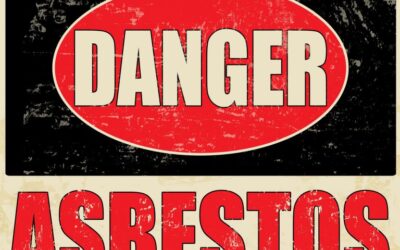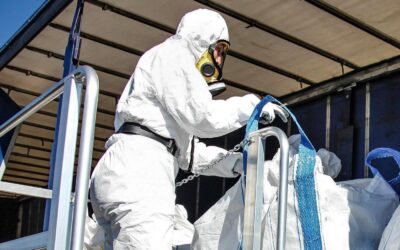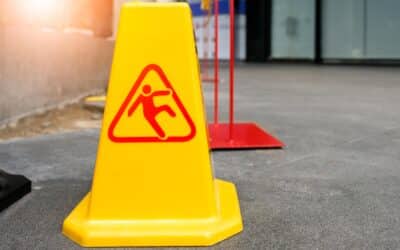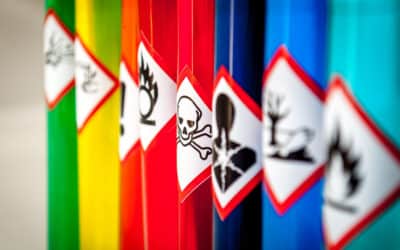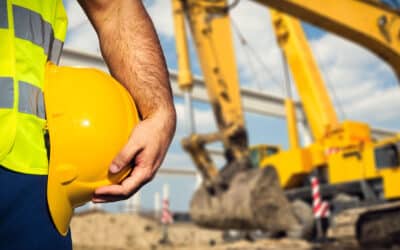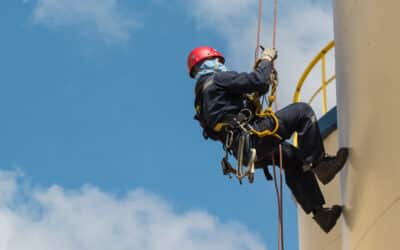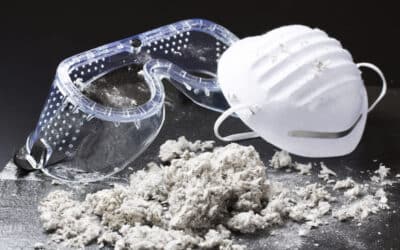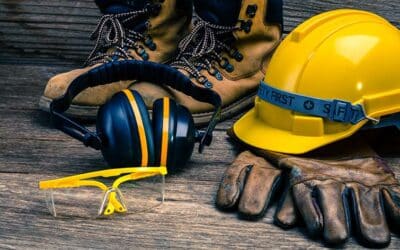BLOG
Mastering Time Management for Personal and Professional Success
Do you ever feel like there just aren’t enough hours in the day? Time management—the ability to plan and control how you spend your time—is a skill that can have a huge impact on both your personal and professional life. With effective time management, you can boost...
The Ultimate Guide to Working from Home: Skills, Training, and Best Practices
Remote work has become an integral part of the modern workplace, and 2025 promises the same, so understanding how to navigate this new normal is more important than ever. Whether you're an employer who needs to be sure of compliance or an employee looking to improve...
A Comprehensive Guide to the Control of Asbestos Regulations 2012
Asbestos has long been recognised as a silent killer—a once-common construction material now linked to serious health risks, including fatal diseases such as mesothelioma and asbestosis. In response, the UK introduced the Control of Asbestos Regulations 2012 to...
New Legal Protections Against Workplace Sexual Harassment: What Employers Need to Know
As of 26 October 2024, new legal protections have come into force in the UK, establishing a stronger framework for preventing workplace sexual harassment and requiring employers to proactively address this issue. With an emphasis on reasonable steps, the new duty...
What is IOSH & How Does Training Help?
Every organisation in the UK needs effective strategies to protect its workforce, comply with regulations, and promote a culture of health and safety. IOSH plays a critical role in these efforts. But what exactly is IOSH, and why should companies consider IOSH...
Fire Risk Assessments 101: What They Are and Why Every Business Needs One
Every business, regardless of size or industry, has a responsibility to protect its people, property, and assets from fire. A well-conducted fire risk assessment can mean the difference between a prepared, safe workplace and one that risks serious harm and costly...
The Role of Personal Protective Equipment (PPE) in COSHH Compliance
In 2023, over 1.8 million workers in the UK suffered from work-related ill health, with hazardous substances being a significant contributor. This statistic reminds us of the critical importance of effective safety measures in the workplace. One of the most vital...
The Role of Safety Culture in Workplace Productivity
The concept of workplace safety tends to conjure up images of brightly coloured hard hats, safety goggles, and caution signs. But while these elements are undeniably important, the true foundation of a safe work environment lies in a robust safety culture. Beyond...
The Long-Term Health Effects of Asbestos Exposure
Asbestos, once praised for its versatility and fire-resistant properties, has left a devastating legacy. Despite its ban in many countries, including the UK, asbestos exposure continues to pose significant health risks, particularly in older buildings and certain...
10 Key Health & Safety Rules for Building Sites
Construction sites are inherently dangerous, with heavy machinery, moving objects and harmful dust just being part of the parcel. Which is why health and safety on building sites is not just about compliance; it’s about safeguarding lives and ensuring a productive...
Understanding LOLER Regulations in the UK: Everything You Need to Know
The UK takes workplace safety very seriously, with regulations designed to protect employees and the public in many different circumstances. Among these regulations, the Lifting Operations and Lifting Equipment Regulations (LOLER) come into play in ensuring the safe...
What is Human Resources and is an HR Department Necessary?
Like the rest of the world, the UK has a complex, quickly evolving business landscape. New laws come into play regularly, the cost-of-living crisis is taking a toll on most employees, and many are still grappling with the aftereffects of the COVID-19 pandemic. All of...
Why Enrol Employees in Online HR Courses?
HR knowledge can enhance workplace dynamics, improve compliance with regulations, boost overall productivity, and improve individual well-being and mental health. One effective way to impart this knowledge is through online HR courses, which offer a flexible,...
Everything You Need to Know About UKAS
Among the many accreditation bodies in the UK, the UKAS is at the top. This is because, when it comes to health and safety advisory services, credibility and trust are of top importance, and the UKAS has these in abundance. Why, you ask? Well, it’s the only...
Understanding Wood Dust: Hazards, Prevention, and Employer Responsibilities
Woodworking operations generate wood dust - that comes as no surprise. What might shock many, however, are the significant health risks that wood dust poses to workers if not properly managed. As a trusted UK Health and Safety Consultancy, Safety Services Direct...
How to Embrace Equality and Diversity in the Workplace
The working landscape keeps changing in the UK, with fluctuating opinions on hybrid and online working, changing policies, and the cost-of-living crisis. However, one thing that doesn’t change is that the principles of equality and diversity are pillars of progress...
Mastering Time Management: A Guide to Productivity and Success
While many topics may be divisive in our modern world, we can agree on one thing: time is a precious commodity. Effectively managing this finite resource is key to unlocking productivity and achieving success. So, in this guide, we’re exploring the art of time...
Guide to Abrasive Wheel Regulations
Abrasive wheels are widely used across various industries, from construction to manufacturing, but their use comes with inherent risks. Whether it's a mounted flap wheel or a diamond cutting wheel, grinding wheels are dangerous. Safety Services Direct, a trusted UK...
Abrasive Wheel Types and Applications
Curious about abrasive wheels and their diverse applications? Whether you're involved in metalworking, construction, manufacturing or even just home DIY, understanding these tools is vital for safe and effective usage. As a trusted UK health and safety advisory, we...
Can You Identify Asbestos-Containing Materials?
Asbestos, once a widely used construction material known for its durability and fire-resistant properties, is now internationally infamous for its severe health risks. As asbestos doesn’t break down naturally and is therefore present in many UK buildings, identifying...
The Legacy of Asbestos in the UK
Asbestos, once hailed for its versatility and used across the construction industry, is banned in the UK due to its severe health implications. The prohibition, enacted to protect public health, was a crucial milestone in championing workplace health and safety. As a...
Navigating PUWER Regulations to Ensure Workplace Safety
In the ever-evolving landscape of workplace safety, businesses across the UK increasingly recognise the importance of adhering to robust health and safety regulations. One such crucial set of regulations is PUWER - an acronym that holds significant weight in...
Benefits of ISO Certification in 2024
In the fast-paced and evolving business landscape of 2024, commitment to excellence, safety, and sustainability is crucial for every business trying to achieve new heights. ISO certifications showcase this commitment while ensuring continual improvement in business...
How to Get ISO Certified in the UK
In a dynamic business landscape, staying ahead often means meeting stringent quality standards. Safety Services Direct, a trusted name in the health and safety industry, has recently expanded its offerings to include ISO gap analysis services, empowering businesses to...
Understanding the 5 Key Principles of the Mental Capacity Act
The Mental Capacity Act (MCA) is the UK's foundation of decision-making in mental health. The principles of this act ensure that the autonomy of individuals with mental health is empowered, supported and respected. This act influences decision-making across the board,...
Guide to Personal Protective Equipment
When it comes to occupational safety, the term "PPE" is often thrown around. But what does PPE stand for, and why is it so important? In this blog, we unravel the meaning of PPE, dive into what’s included, the industries that require PPE, and navigate the intricate...
Understanding Employee Health and Safety Responsibilities in the UK Workplace
Safety is a cornerstone of any workplace, and in the United Kingdom, the Health and Safety at Work Act 1974 is a central framework for establishing and maintaining secure workspaces. And while many think this legislation puts the responsibility on employers, this act,...
The Difference Between Hazard and Risk in UK Health and Safety
In the UK, where safety is woven into our laws, a basic understanding of the concepts of hazards and risks is crucial. The ability to differentiate between these terms is necessary for the effective health and safety management required by all businesses to succeed....
Demystifying RIDDOR – Reporting of Injuries, Diseases, and Dangerous Occurrences Regulations
Workplace safety is paramount. We all know it, but how many of us are familiar with the acronym "RIDDOR"? The Reporting of Injuries, Diseases, and Dangerous Occurrences Regulations is a crucial aspect of ensuring safe work environments. So, in this comprehensive...
What is SSIP Accreditation?
To stay on top of the competition in today’s market, accreditation is crucial. And in the world of health and safety, ensuring that your organisation, suppliers and contractors meet the same safety standards is paramount. This is where SSIP Accreditation comes in. In...
Top 10 Workplace Safety Hazards: How SAS Can Help You Address Them
Workplace safety is a non-negotiable priority for businesses of all sizes and industries, as neglecting safety hazards can lead to accidents, injuries, legal issues, financial losses, a ruined business reputation and more. In this article, Safety Services Direct...
Five Common Mistakes to Avoid in RAMS
In our modern world, where organisations are dynamic hubs where so much happens, risk assessments and method statements are integral to ensuring the safety and efficiency of operations across various industries. At Safety Services Direct, we know how important these...
What is a Gap Analysis?
In our fast-paced world, where competition between companies grows ever more fierce, organisations need to keep on top of the ball. Gone are the days when you could offer a great service or product, and that’s enough to get by; here are the days where excellence is...
What Does ISO Stand For?
Standing for the International Organisation for Standardisation, ISO is more than just a sequence of letters; it represents a global framework for quality, safety, and efficiency across various sectors. In this blog, Safety Services Direct delve into what ISO stands...
The 3 P’s of First Aid: Preserve, Prevent, Promote
Accidents and emergencies can happen unexpectedly, often catching us off guard. In these critical moments, having a basic understanding of first aid can make a life-saving difference. First aid is not just a skill; it's a set of principles designed to provide...
What Should Be Included In Your Asbestos Policies & Procedures?
Asbestos is a hazardous material that was widely used in construction, manufacturing, and other industries until the 1980s. Although the use of asbestos has been banned in the UK since 1999, many buildings still contain asbestos-containing materials (ACMs), which can...
Why Fire Marshal Training is Crucial for Workplace Safety
Fire safety is an essential aspect of workplace safety that should never be taken lightly. In the United Kingdom, fire safety regulations and legal requirements exist to ensure that employers take the necessary measures to protect their employees and property from the...
Burns In The Workplace丨Causes, Degrees & Treatment Options
Burns are a common workplace injury that can result from exposure to heat, chemicals, electricity, radiation, and other hazards. Depending on their severity, burns can cause pain, swelling, blistering, tissue damage, and even death. In this article, we will discuss...
The Importance of PPE in the Workplace
Personal protective equipment (PPE) is a crucial aspect of workplace safety that cannot be ignored. Employees face a range of hazards that could cause injury or illness, such as working with hazardous substances or heavy machinery. The use of appropriate PPE can...
Asbestos Awareness Courses & Certificates: Your Questions Answered
Asbestos is an extremely dangerous substance that can be found in sprayed coatings on ceilings or walls, loose-fill insulation, roofing and various other locations. This hazardous substance can be detrimental to the health of employees. Protecting employees from this...
What Is The ConstructionLine Accreditation?
To thrive in today’s construction industry, businesses need to work towards achieving certain accreditations as they help to demonstrate a business's compliance with relevant health and safety standards. One of these top accreditation is ConstructionLine which is...
What Is Lone Working? Everything Employers Need To Know
Updated 08/06/2023 Lone working encompasses a broad range of industries and occupations, resulting in an estimated 6.8 million workers in the UK falling into this category. There are a variety of risks associated with lone work, which are important for both employees...
What Is A Dynamic Risk Assessment?
Risk assessments are crucial in every industry and business. They have multiple purposes, but first and foremost, they ensure that your staff are not exposed to any unnecessary risks. Formal risk assessments are very useful in identifying potential hazards and...
How To Improve Your Manual Handling Technique
Using the correct techniques when working with heavy items is crucial. Lifting and carrying aren’t as simple as you would think, and serious consequences can become a reality if these actions are done incorrectly. Safety Services Direct has many years of experience in...
When Are Personal Fall Arrest Systems To Be Used?
Updated: 07/07/2023 Working at heights can be daunting, especially when you know there is a risk of falling. With or without fall arrest equipment, it can be a scary position to be in. However, the risk of working at heights should never be taken without the right...
9 Working At Height Safety Tips
Updated: 07/07/2023 Working at heights is one of the biggest culprits contributing to injuries and fatalities that occur in the workplace. In fact, 24% of worker deaths were caused by fatal injuries in 2021/22. As an employer, it is crucial to prioritise safety and...
What Is A Risk Assessment & Method Statement?
What is a Risk Assessment? Risk assessments form the cornerstone of UK health & safety legislation and the requirement for organisations to prepare risk assessments are clearly outlined in several health and safety acts and regulations including the HSE. A risk...
Violence in The Workplace
Since the pandemic began, individuals, teams, and entire organisations have been put under more stress than ever. Along with this stress and the changes that the pandemic has caused, there has been a severe spike in violence in the workplace. Not only are physical and...
What Is Your Maximum Manual Handling Weight Limit?
When it comes to manual handling, ensuring the health and safety of employees should be of the utmost importance. Many factors can affect how safe a manual handling activity is; however, there are many lifting tips available for both employers and employees to help...
Manual Handling Injuries: Causes & Prevention
Manual handling injury statistics indicated that during 2018 and 2019, approximately 650,208 workplace injuries were reported over the course of the year. Of this, 20% were attributed to activities where handling, lifting or carrying was involved, and 19% were due to...
What Are CDM Regulations & What Is Their Purpose?
Updated: 07/07/2023 In the world of construction, where innovation, progress, and development happen at a phenomenal pace, a single misstep can spell disaster. The safety of the workers involved, the integrity of the project, and the welfare of the public are of...
PPE and Heat Stress
As we move into Phase 3 of the Government's 'Plan To Rebuild' and many places of work and businesses start to reopen under the new Covid-19 secure guidelines, PPE has quickly become the norm for workplaces that would not normally wear it such as retail stores, hair...
Steps You Need To Take To Get Your Workplace COVID-19 Secure
As we begin to see the light at the end of the lockdown tunnel, businesses across the country will be looking forward to returning to some form of normality. Nevertheless, the threat of coronavirus is by no means gone, and the lessons of the past few months will...
Fit Testing Face Masks
As construction sites and manufacturing businesses begin to open up, following the guidance released by the Government this week, one of the precautionary measures that many people have taken upon themselves to implement is the use of face masks. Although scientists...
RIDDOR Reporting and COVID-19
Under RIDDOR (Reporting of Injuries, Diseases and Dangerous Occurrences Regulations) employers/businesses are expected to report cases of COVID-19 to the HSE, as they would any other disease or illness that an employee has been exposed to in the workplace. A couple of...
Homeworking Risk Assessments
Working from home has now become the new normal for many of us and businesses who didn't even have a homeworking policy in place this time last month, have now had to implement one, where possible, in order to practice social distancing without compromising the...
Protecting Your Mental Health During A Pandemic
The threat of coronavirus extends far beyond just those who are infected by it. It is having a monumental impact on many other areas of our lives and wider society too. For example, it is having a great effect on people who suffer from pre-existing mental health...
Covid & the Importance of a Workplace Pandemic Preparedness Policy
With coronavirus hitting the UK, the World Health Organisation (WHO) characterising it as a pandemic, and Donald Trump banning travel from European countries to the US (except for the UK), businesses may have to make some big decisions to ensure workforce safety....
How To Prevent The Transmission of Coronavirus
The latest Coronavirus (2019-nCoV) was first reported on 31st December. Originating in China, it has since spread to other countries, with nine people in the UK testing positive for the illness. Unfortunately, there is no vaccine or medication to protect us; however,...
Do You Know Your Fire Extinguishers? Types, Colours & Classes
Updated: 07/07/2023 Fire safety is a crucial aspect of workplace security, and one of the key components of fire safety is understanding fire extinguishers. While we all endure the occasional inconvenience of fire alarm drills, many companies overlook the importance...
Health and Safety Workplace Statistics for 2019/18
The HSE recently released their annual Health and Safety statistics for 2018/2019, and you should take the time to have a look through these in more detail, but we're going to break down some of the most interesting figures. There has been a slight increase in the...
What Is A COSHH Risk Assessment? A Comprehensive Guide
As an employer, it is crucial to prioritise the health and safety of your employees, especially when it comes to working with hazardous substances. A COSHH (Control of Substances Hazardous to Health) risk assessment plays a vital role in identifying, evaluating, and...
What Is COSHH Training and Do I Need It?
All employers have a legal obligation to reduce any potential risks to their employee’s health. It is down to you to ensure that a workplace is fit for purpose, meets requirements, and above all else keeps your employees safe and well. This involves everything from...
What is the Difference Between Slips, Trips, and Falls?
Slips, trips and falls make up over a third of workplace accidents and are the most common workplace hazard. But what exactly do we mean when we say slips, trips and falls? More often than not, we use the terms “slip”, “trip”, and “fall” interchangeably. But there are...
What Injuries Can Be Caused By Manual Handling?
If not done correctly, manual handling in the workplace can result in any number of injuries including minor cuts and bruises, right up to more serious musculoskeletal disorders (MSDs) such as back pain, muscle and tendon damage, and repetitive strain injury. Manual...
HSE Launch a New Round of Dust Inspections
The HSE have announced that they are cracking down on UK businesses where workers are exposed to a range of different dusts that are linked to respiratory diseases. Over the next few weeks, HSE inspectors will focus on industries such as construction, woodworking and...
5 Facts About Asbestos
Asbestos is a harmful substance that, although is not used in construction today, is often found in older buildings, putting a number of workers at harm if they're not correctly educated and protected - that's where Asbestos Awareness Training Courses and PPE...
Do You Need CHAS Accreditation?
CHAS is a health and safety accreditation scheme that aims to improve health and safety standards across the UK. It stands for: ● Contractors ● Health & Safety ● Assessment ● Scheme CHAS is one of a number of health and safety assessment schemes available; it's...
What’s The Difference Between Risk Assessments & Method Statements?
Risk Assessments and Method Statements are often mentioned within the same breath, as the two reports tend to be carried out side by side. However they are differing documents that analyse different health and safety elements of the working environment. In the...
Your Duty Under RIDDOR
All employers have a duty of care towards their workers which means that they must take all necessary steps to ensure their health, safety and well-being at all times whilst at work. This includes conducting a risk assessment to identify any hazards and put...
How Important is UKATA Asbestos Awareness Training?
UKATA is the United Kingdom Asbestos Training Association, and is one of the leading authorities and the UKATA Asbestos Awareness Course is delivered in accordance with the current HSE legislation. As one of the most respected programme providers for Asbestos...
Is Your Workplace Ready For Brexit?
Brexit has been somewhat of a rollercoaster since the results were announced back in June 2016 (yes, this has been going on for over two and a half years) and with the UK officially leaving the EU on the 29th of March we may finally have some idea as to what this...
Biggest Causes of Workplace Accidents in 2018
Last year almost two thirds of workplace accidents were caused by just three types of hazards: manual handling, slips, trips and falls and being struck by an object. These are all relatively avoidable and given the correct training and equipment you can ensure that...
Who Are RoSPA? – RoSPA Explained
RoSPA (The Royal Society for the Prevention of Accidents) are a registered charity devised to prevent workplace accidents that can cause life altering accidents. Their mission brings people together to discover life-enhancing skills which reduces accidental injuries,...
How To Reduce Slips, Trips and Falls
A slip, trip or fall in the workplace can lead to a serious injury or worse. 31% of non-fatal injuries in the UK in 2017/2018 were caused by slips, trips and falls. With 100 people dying from work-related incidents, the fight to reduce harm in the workplace continues....
What Are Your COSHH Responsibilities? COSHH Explained
Updated 08/06/2023 The health and safety of employees in the workplace is of paramount importance, especially when it comes to handling hazardous substances. The Control of Substances Hazardous to Health (COSHH) regulations play a vital role in ensuring the protection...
What Are RAMS? Risk Assessment Method Statements Explained
Every business has to complete a risk assessment. For any company that employs over five people, it is a legal responsibility to document all risk assessments undertaken in the workplace. Risk Assessment Method Statements (RAMS) are bespoke documents, tailored to...
Employers’ Health and Safety Responsibilities
Employers are responsible for the health and safety of all employees and visitors to their premises. Visitors include customers, suppliers and the public. Essentially, it is an employers' duty to look after every person on site and make sure they do not come to harm....
Essential Safety Equipment for Construction Workers
In the construction industry, having the essential safety equipment is a health and safety expectation. No matter the task expected to be completed, there are hazards which will require unique safety measures to be put in place to protect staff. Without proper...
What Is Abrasive Wheels Training?
The Abrasive Wheels training course is designed to increase awareness for anyone who uses abrasive wheels as part of their job. Online Abrasive Wheels Training Course Overview The Online Abrasive Wheel Training Course contains a number of modules, aimed at...
What Are The Hazards Of Working At Height?
Updated 07/07/2023 Workplace safety is of paramount importance, especially when it comes to working at height. Working in these conditions presents various hazards for workers to contend with that usually wouldn’t be a big issue at ground level. According to the HSE,...
10 Common Dangers on a Construction Site
According to the latest figures from the Health and Safety Executive, the construction industry topped the list for fatal injuries in the UK during 2017/18. For the period, there were a total of 144 workers killed at work (38 in the construction) across the UK which...
How To Write A Drug and Alcohol Workplace Policy
Updated: 07/07/2023 Drug and alcohol abuse in the workplace is more common than you would probably like to think - it’s a prevalent issue that demands attention. Having a clear drug and alcohol workplace policy (written up and distributed to employees) is crucial for...
How To Protect Yourself From Asbestos
Although it may look rather harmless, asbestos is an extremely dangerous substance that kills approximately 5,000 workers every year making it one of the biggest causes of worker death in the UK. If you inhale asbestos fibres, it can cause life-threatening illnesses...
Your GDPR Checklist
GDPR is an extensive 88-page document covering every aspect of the new EU data protection laws. Businesses who are non-compliant with GDPR after the 25th of May 2018 may find themselves being issued a large fine of up to €20 million or 4% of their annual turnover, so...
Five of the Biggest Health and Safety Risks in 2018
As we continue to move into the new year, OSHCR (Occupational Safety and Health Consultants Register) has warned of the five biggest risks to employee health and safety in 2018. These are things that you should be aware of now so that you can put procedures and...
What Is GDPR and Do You Need GDPR Training?
The moment you have been waiting for is almost upon us. GDPR comes into effect on 25th May and as we draw closer to the big day, it’s important that you understand your responsibilities and legal requirements regarding the new laws. This new framework for data...
Biggest (and Most Ridiculous) Health and Safety Myths
There are myths aplenty in the world of health and safety but the HSE are quick to clear up any workplace rumours. The following are real cases presented to HSE and they busted the myth pretty promptly: Kettles and microwaves aren't allowed in the office In one...
How Can You Protect Your Employees When There is Extreme Winter Weather?
Last week, the UK experienced some of the heaviest snowfall in recent years with many places seeing up to 10 inches of snow over the course of 24 hours! This is probably not the last time we will face treacherous weather conditions this winter, so we should do what we...
How Can Online Health and Safety Training Benefit Your Business?
The benefits of online health and safety training for businesses are staggering; so much so, that it would seem silly not to purchase a heap of courses today and start earning those all important certificates. From Abrasive Wheels and Working At Heights to Asbestos...
